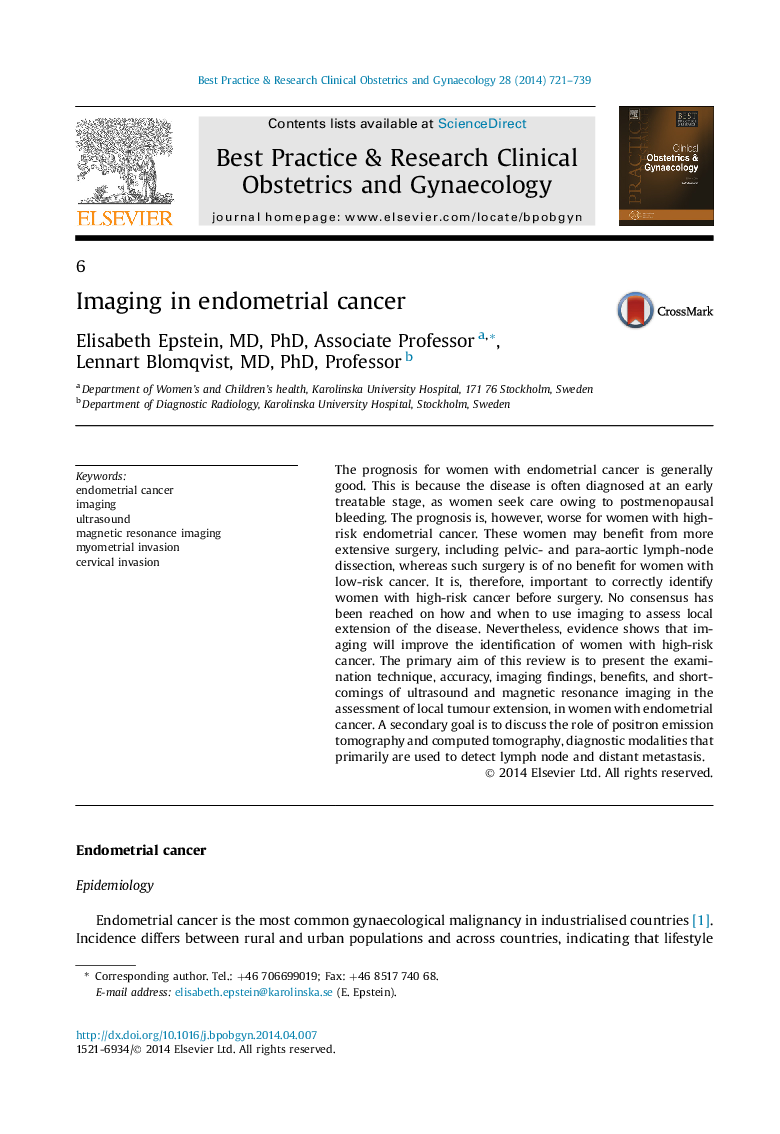| Article ID | Journal | Published Year | Pages | File Type |
|---|---|---|---|---|
| 3907321 | Best Practice & Research Clinical Obstetrics & Gynaecology | 2014 | 19 Pages |
The prognosis for women with endometrial cancer is generally good. This is because the disease is often diagnosed at an early treatable stage, as women seek care owing to postmenopausal bleeding. The prognosis is, however, worse for women with high-risk endometrial cancer. These women may benefit from more extensive surgery, including pelvic- and para-aortic lymph-node dissection, whereas such surgery is of no benefit for women with low-risk cancer. It is, therefore, important to correctly identify women with high-risk cancer before surgery. No consensus has been reached on how and when to use imaging to assess local extension of the disease. Nevertheless, evidence shows that imaging will improve the identification of women with high-risk cancer. The primary aim of this review is to present the examination technique, accuracy, imaging findings, benefits, and shortcomings of ultrasound and magnetic resonance imaging in the assessment of local tumour extension, in women with endometrial cancer. A secondary goal is to discuss the role of positron emission tomography and computed tomography, diagnostic modalities that primarily are used to detect lymph node and distant metastasis.
